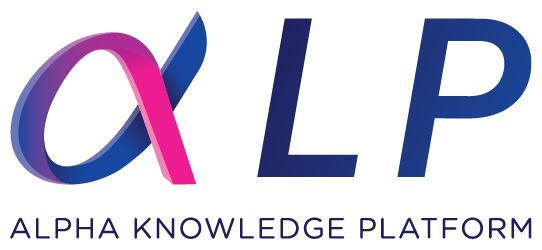TickerTape
Weekly Global Stablecoin & CBDC Update
This Week’s Stories
- World Liberty Financial Launches USD1 on Solana
- Yen Stablecoin “Strategically Optimal”
- HKMA Receives 77 Stablecoin Issuer License Applications
- Obita Raises $10M for Cross-Border Stablecoin Payment Infrastructure
- HK and China: Stablecoin Regulation Challenges
- China’s Growing “Crypto-Curiosity”
- Stablecoins & AI Will Drive Infrastructure Revolution
- BoC Stocks Surge Amid Stablecoin Rumours
- Reflect Money Raises USD3.75M Seed Round
- Digital Lira Second Phase with Private Sector Call
- ECB Calls for Closing MiCAR Loopholes
- Institutional Crypto Adoption Drives Stablecoin Market Surge
- Galaxy Digital CEO: AI-Driven Stablecoin Transactions to Come
- Tempo Blockchain Officially Univeiled
- Fireblocks Launches Enterprise Stablecoin Payments Network

World Liberty Financial (WLFI), backed by the Trump family, expanded its USD1 stablecoin to the Solana blockchain with an initial mint of 100 million tokens on August 30, 2025. The launch follows exchange integrations and preparations for the WLFI governance token release scheduled for September 1, 2025. Coinbase announced plans to list the USD1 token, providing major exchange support for the Trump-linked stablecoin project. The decision to launch on Solana demonstrates WLFI’s strategy to leverage high-performance blockchain networks for fast and cost-effective transactions. Solana co-founder Anatoly Yakovenko publicly celebrated the announcement, indicating ecosystem support for the project. The 100 million token mint represents one of the largest stablecoin launches on Solana in 2025, introducing significant liquidity for traders and DeFi protocols.
Key Takeaways:
- Trump family’s WLFI launches USD1 stablecoin on Solana with 100 million initial token mint
- Coinbase confirms plans to list USD1, providing major exchange support for the project
- WLFI governance token scheduled for release on September 1, 2025, expanding project offerings
- Solana co-founder Anatoly Yakovenko publicly supports the USD1 launch announcement
- 100 million mint represents one of largest stablecoin launches on Solana network in 2025
- Launch introduces high liquidity pool for Solana-based trading and DeFi protocol integration
Why It Matters:
- Demonstrates political influence entering stablecoin markets through Trump family association
- Shows Solana’s growing attraction for major stablecoin launches and ecosystem expansion
- Could accelerate mainstream adoption through high-profile political and exchange backing
- May influence regulatory approaches to politically-affiliated cryptocurrency projects
- Validates Solana’s technical capabilities for large-scale stablecoin operations and liquidity provision
- Reflects convergence of political influence, traditional finance, and cryptocurrency innovation
Market analysts and economists view the timing of Japan’s first yen-pegged stablecoin launch as strategically optimal, coinciding with expectations that the Bank of Japan will raise interest rates in the fourth quarter of 2025. Leading bankers and economists anticipate BOJ rate hikes will boost the appeal of yen-denominated assets, including the upcoming JPYC stablecoin. Higher interest rates would make yen-backed stablecoins more attractive compared to dollar-denominated alternatives, particularly for investors seeking yield and currency diversification. The timing aligns with global trends toward domestic currency-pegged stablecoins and Japan’s broader strategy to enhance yen internationalization. Financial institutions and treasury managers are expressing increased interest in yen-denominated digital assets as potential alternatives to traditional dollar-based holdings.
Key Takeaways:
- Japan’s first yen-pegged stablecoin launch timing aligns with anticipated BOJ interest rate increases
- Economists expect Q4 2025 rate hikes will boost appeal of yen and yen-denominated assets
- Higher rates would make yen stablecoins more competitive versus dollar-pegged alternatives
- Launch timing supports Japan’s broader yen internationalization strategy and currency promotion
- Financial institutions showing increased interest in yen-denominated digital asset alternatives
- Strategic positioning could capture market share from established USD-denominated stablecoins
Why It Matters:
- Demonstrates how monetary policy timing can influence stablecoin market competitiveness and adoption
- Shows strategic coordination between regulatory approval and favorable economic conditions
- Could accelerate adoption of non-USD stablecoins through attractive yield differentials
- May influence other central banks to time domestic stablecoin launches with favorable monetary cycles
- Reflects growing international competition to challenge U.S. dollar dominance in stablecoin markets
- Validates importance of interest rate environments in digital asset investment decisions
The Hong Kong Monetary Authority announced it received 77 expressions of interest for stablecoin issuer licenses by the August 31, 2025 deadline, spanning diverse sectors including banking, technology, Web3 startups, asset management firms, e-commerce platforms, and payment service providers. The HKMA has begun initial screening discussions with applicants to assess their preparedness and intentions before formal submissions. The authority emphasized that expressions of interest do not constitute regulatory approval or endorsement, and final licensing will depend on meeting strict compliance requirements including anti-money laundering measures and robust reserve backing. Only a limited number of licenses will be granted in the initial phase, creating intense competition among applicants. The regulator has not disclosed the identities of interested parties and stressed that the current discussions are part of early evaluation processes.
Key Takeaways:
- HKMA received 77 expressions of interest for stablecoin licenses from diverse sectors by August 31 deadline
- Applicants include banks, tech companies, asset managers, e-commerce sites, payment providers, and Web3 startups
- Initial screening meetings being held to assess preparedness before formal application submissions
- Only limited number of licenses will be granted in initial phase, creating competitive environment
- Final approvals dependent on meeting strict compliance requirements and reserve backing standards
- HKMA refuses to disclose applicant identities and emphasizes expressions of interest are not approvals
Why It Matters:
- Demonstrates significant global interest in Hong Kong’s regulated stablecoin market and framework
- Shows diverse industry participation beyond traditional crypto companies seeking stablecoin opportunities
- Could establish Hong Kong as major Asian hub for regulated stablecoin issuance and innovation
- May influence other jurisdictions to develop similar comprehensive stablecoin licensing frameworks
- Reflects growing institutional confidence in stablecoins as legitimate financial infrastructure
- Competition for limited licenses could drive higher quality applications and stronger market entrants
Digital financial network Obita secured over $10 million in angel round funding co-led by Vision Plus Capital and Mirana Ventures, with participation from Legend Capital, HashKey Capital, and Web3.com Ventures. The company will use the capital for R&D, compliance infrastructure, and global deployment of its stablecoin-powered cross-border payment platform. Obita’s solution addresses high foreign exchange costs and slow settlement times in traditional payment systems by offering low-cost, real-time settlements with full regulatory compliance. The platform leverages blockchain technology to optimize capital flows for global trade, e-commerce, and supply chains. This investment comes amid accelerating stablecoin legislation and adoption globally, positioning Obita as a major player in redefining stablecoin-based financial services.
Key Takeaways:
- Obita raises $10M in angel funding co-led by Vision Plus Capital and Mirana Ventures
- Capital allocated toward R&D, compliance infrastructure, and global platform deployment
- Platform offers low-cost, real-time stablecoin settlements addressing traditional payment system inefficiencies
- Targets global trade, e-commerce, and supply chain capital flow optimization
- Investment coincides with accelerating global stablecoin legislation and adoption
- Positions Obita as major player in emerging stablecoin-based financial services sector
Why It Matters:
- Demonstrates continued venture capital confidence in stablecoin infrastructure companies
- Shows market demand for practical applications addressing real-world payment system problems
- Could accelerate adoption of stablecoin-based cross-border payment solutions
- Validates business model potential for blockchain-powered financial services platforms
- May influence traditional payment companies to develop similar stablecoin capabilities
- Reflects growing institutional investment in regulatory-compliant cryptocurrency applications
CNN reports that Hong Kong’s ambitious stablecoin licensing framework faces implementation challenges as China uses the city as a testing ground for cryptocurrency innovation while mainland trading remains banned. The regulatory regime requires substantial liquidity reserves, rigorous KYC checks, and minimum capital of HK$25 million, raising compliance costs significantly. Some prospective issuers who initially showed strong interest are now adopting wait-and-see approaches due to strict requirements including full backing with highly liquid treasuries and identity verification for transactions exceeding HK$8,000. Despite receiving 77 license applications, industry experts note that high entry barriers effectively exclude smaller participants while potentially creating a more robust ecosystem. The framework aims to position Hong Kong as Asia’s crypto hub amid the $3.8 trillion global digital assets market.
Key Takeaways:
- Hong Kong’s stablecoin framework faces implementation challenges due to strict capital and reserve requirements
- HK$25 million minimum capital and full treasury backing requirements exclude smaller market participants
- Rigorous KYC checks for transactions over HK$8,000 significantly increase compliance costs for issuers
- Some initially interested issuers now adopting cautious wait-and-see approach to first licensing round
- China uses Hong Kong as testing ground while maintaining mainland cryptocurrency trading bans
- High regulatory standards could create more trustworthy ecosystem despite limiting market entry
Why It Matters:
- Demonstrates tension between regulatory rigor and market accessibility in stablecoin development
- Shows how strict compliance requirements can limit innovation while enhancing security and stability
- Could influence other jurisdictions’ approaches to balancing market entry with consumer protection
- May affect Hong Kong’s competitiveness as regional crypto hub if barriers prove too restrictive
- Reflects broader challenge of implementing comprehensive digital asset frameworks in practice
- Validates trade-off between market growth and regulatory oversight in emerging digital finance sectors
The Economist examines China’s evolving cryptocurrency stance, noting that over 99% of stablecoins worth $280 billion remain pegged to the U.S. dollar, while Beijing considers yuan-backed alternatives through Hong Kong’s regulatory framework. The analysis questions whether Chinese leaders genuinely want stablecoins to succeed given potential challenges to capital controls and monetary sovereignty. Following Trump’s GENIUS Act passage in July, China faces pressure to respond to U.S. stablecoin dominance while balancing domestic financial stability concerns. The report suggests China’s crypto-curiosity represents strategic positioning rather than wholesale embrace, as authorities explore controlled digital asset adoption through Hong Kong while maintaining mainland restrictions. The tension between innovation and control remains central to China’s approach.
Key Takeaways:
- Over 99% of $280 billion stablecoin market remains U.S. dollar-pegged despite Chinese interest
- China explores yuan-backed stablecoins through Hong Kong while questioning long-term strategic benefits
- Beijing faces tension between challenging U.S. dominance and maintaining domestic financial controls
- Trump’s GENIUS Act creates pressure for Chinese response to American stablecoin regulatory leadership
- China’s “crypto-curiosity” represents strategic positioning rather than fundamental policy shift
- Hong Kong serves as controlled testing ground for digital asset innovation under mainland oversight
Why It Matters:
- Highlights global competition for monetary influence through digital currency development
- Shows complexity of balancing innovation with existing financial system control mechanisms
- Could influence Chinese timeline and approach to domestic stablecoin development initiatives
- Demonstrates how U.S. regulatory leadership affects international digital asset policy decisions
- Reflects broader geopolitical competition extending into digital finance and monetary sovereignty
- May determine whether alternative currency-pegged stablecoins can challenge dollar dominance effectively
Citigroup’s survey of 537 industry leaders reveals stablecoins, artificial intelligence, and tokenization will fundamentally reshape post-trade processing infrastructure. The research indicates T+1 settlement adoption and generative AI implementation are accelerating transformation of trade processing systems. Financial institutions are increasingly integrating stablecoin settlement capabilities to reduce counterparty risk, settlement times, and operational costs compared to traditional correspondent banking. AI applications include automated reconciliation, compliance monitoring, and predictive analytics for trade settlement optimization. The survey suggests convergence of blockchain-based settlement with AI-powered processing could eliminate traditional intermediaries and create more efficient capital markets infrastructure. Citi’s analysis positions stablecoins as critical infrastructure for next-generation financial market operations alongside artificial intelligence automation.
Key Takeaways:
- Citi survey of 537 leaders identifies stablecoins and AI as primary drivers of post-trade infrastructure change
- T+1 settlement adoption and generative AI accelerating transformation of traditional trade processing systems
- Stablecoin integration reduces counterparty risk, settlement times, and operational costs versus correspondent banking
- AI applications include automated reconciliation, compliance monitoring, and predictive settlement analytics
- Blockchain-based settlement convergence with AI could eliminate traditional financial intermediaries
- Financial institutions positioning stablecoins as critical infrastructure for next-generation market operations
Why It Matters:
- Demonstrates major financial institution recognition of stablecoins as core market infrastructure
- Shows convergence of blockchain technology with artificial intelligence for operational efficiency
- Could accelerate institutional adoption of stablecoin settlement across capital markets
- May pressure traditional financial intermediaries to adapt or face displacement
- Validates stablecoins’ role in modernizing legacy financial system infrastructure
- Reflects broader transformation of financial services through emerging technology integration
Bank of China Hong Kong shares jumped 6.7% to HKD$37.58 following Hong Kong Economic Journal reports that the bank’s local division plans to seek a stablecoin issuance license. The bank has established a specialized team to investigate stablecoin issuance, though official confirmation remains pending. During recent earnings calls, Bank of China mentioned examining digital asset applications and associated risk management strategies. The stock surge follows Hong Kong’s August 1 stablecoin licensing framework launch, which includes stringent reserve management, redemption guarantees, and anti-money laundering requirements. However, Hong Kong regulators warned against speculation, noting market fluctuations following licensing announcements may be misleading given considerable uncertainties about application outcomes. Major Chinese tech firms including JD.com and Ant Financial have also signaled international licensing intentions.
Key Takeaways:
- Bank of China Hong Kong shares surge 6.7% on stablecoin license application speculation
- Bank establishes specialized team for stablecoin investigation and digital asset risk assessment
- Hong Kong’s August 1 licensing framework includes stringent reserve and AML requirements
- Chinese tech giants JD.com and Ant Financial also pursuing international stablecoin licenses
- Regulators warn against speculation due to uncertainties about application outcomes
- Market enthusiasm reflects investor confidence in regulated stablecoin business potential
Why It Matters:
- Demonstrates major Chinese banking institution’s strategic entry into regulated stablecoin markets
- Shows investor confidence in stablecoin business models following regulatory clarity
- Could accelerate Chinese financial institution participation in Hong Kong’s digital asset framework
- May influence other major banks to consider similar stablecoin license applications
- Reflects growing mainstream acceptance of stablecoins as legitimate financial products
- Validates Hong Kong’s success in attracting institutional interest through comprehensive regulation
Reflect Money announced a $3.75 million seed round led by a16z crypto’s CSX accelerator, with participation from Solana Ventures, Equilibrium, BigBrain Holdings, and Colosseum. The startup won Grand Champion at Colosseum’s 2024 Solana Radar hackathon and will use capital to develop “software-as-a-stablecoin” infrastructure enabling any application to issue yield-bearing dollars without lockups or operational complexity. Reflect’s protocol tokenizes onchain DeFi strategies including delta-neutral basis trades and lending, converting deposited USDC balances into yield-bearing “USDC+” while maintaining full liquidity. CEO Nico James emphasizes that “idle stablecoin balances should be put into productive DeFi yield strategies” rather than remaining as “dead capital” in wallets.
Key Takeaways:
- Reflect raises $3.75M seed round led by a16z crypto for yield-bearing stablecoin infrastructure
- Platform enables applications to issue yield-bearing dollars without lockups or operational complexity
- Protocol tokenizes DeFi strategies converting USDC into liquid “USDC+” with integrated yield
- Won Grand Champion at Colosseum’s Solana Radar hackathon validating technical capabilities
- Targets idle stablecoin capital optimization through automated DeFi strategy implementation
- Solana Ventures participation demonstrates blockchain ecosystem support for stablecoin innovation
Why It Matters:
- Shows continued venture capital investment in stablecoin infrastructure and yield optimization
- Demonstrates evolution of stablecoins beyond simple fiat pegs toward yield-bearing alternatives
- Could accelerate adoption of productive stablecoin strategies over idle token holdings
- Validates Solana as preferred blockchain for advanced stablecoin and DeFi applications
- May influence development of yield-bearing features in traditional stablecoin products
- Reflects growing sophistication in digital asset infrastructure and user experience design
The Central Bank of the Republic of Turkey (TCMB) issued a comprehensive call for participation on September 3, 2025, inviting finance and technology companies to enrich its Digital Turkish Lira Project ecosystem. The seven-page document outlines five key areas for project applications: tokenization, programmable payments, user-sovereign identity, interoperability with existing systems, and machine-to-machine payment scenarios. Organizations can apply with up to three projects across categories, with the October 15, 2025 deadline for first-stage involvement. This second phase follows successful 2022-2023 retail payment pilots, with the central bank seeking to diversify CBDC use cases and integrate additional participants. The initiative aims to position the Digital Turkish Lira as a cornerstone of Turkey’s rapidly developing financial technology ecosystem through innovative private sector collaboration.
Key Takeaways:
- Turkey launches Digital Lira CBDC second phase with private sector call for participation on September 3, 2025
- Five focus areas include tokenization, programmable payments, identity solutions, interoperability, and M2M payments
- Organizations can submit maximum three projects with October 15 deadline for first-stage applications
- Follows successful 2022-2023 retail payment pilots demonstrating basic CBDC functionality
- Initiative seeks to diversify use cases beyond payments and integrate additional ecosystem participants
- Aims to establish Digital Turkish Lira as key component of Turkey’s fintech ecosystem development
Why It Matters:
- Demonstrates Turkey’s strategic approach to CBDC development through private sector innovation partnerships
- Shows evolution from basic payment functionality toward advanced programmable money applications
- Could accelerate CBDC adoption by leveraging private sector expertise and market-driven solutions
- May influence other central banks to adopt similar collaborative approaches for CBDC ecosystem development
- Reflects growing recognition that successful CBDCs require diverse use cases beyond simple payments
- Validates importance of interoperability and identity solutions for comprehensive digital currency systems
European Central Bank President Christine Lagarde warned EU legislators, to demand robust safeguards from foreign stablecoin issuers to prevent reserve runs within the EU. Speaking at a regulatory conference, Lagarde highlighted gaps in the Markets in Crypto-Assets Regulation (MiCAR), particularly regarding multi-issuance schemes where EU and non-EU entities jointly issue fungible stablecoins. She emphasized that during crisis scenarios, investors would prefer redeeming stablecoins in jurisdictions with stronger protections like the EU, but local reserves may prove insufficient during concentrated demand. Lagarde stressed the necessity of international cooperation and equivalence frameworks to prevent risks from seeking “the path of least resistance.” Italian regulator Federico Cornelli additionally called for clarifying that only the euro holds legal tender status in financial transactions.
Key Takeaways:
- ECB President Lagarde identifies critical gaps in EU stablecoin regulation requiring immediate attention
- Multi-issuance schemes between EU and non-EU entities create regulatory arbitrage opportunities
- During crises, investors likely to redeem in EU due to stronger protections, risking reserve inadequacy
- Calls for robust equivalence frameworks and international cooperation to close regulatory gaps
- Italian regulator emphasizes only euro should have legal tender status in EU financial transactions
- Highlights need for global coordination to prevent regulatory race to bottom in stablecoin oversight
Why It Matters:
- Reveals significant vulnerabilities in current EU stablecoin regulatory framework requiring urgent fixes
- Could influence upcoming EU legislative changes to strengthen cross-border stablecoin oversight
- Demonstrates growing regulatory concern about systemic risks from rapid stablecoin market growth
- May accelerate international coordination efforts for comprehensive stablecoin regulation
- Shows tension between innovation encouragement and financial stability preservation in digital assets
- Could affect EU competitiveness if stricter rules drive stablecoin activity to other jurisdictions
A comprehensive market analysis reveals stablecoin supply reached $277.8 billion with 83% of institutional investors planning increased crypto exposure in 2025, marking a fundamental shift from retail speculation to strategic corporate allocation. The transformation accelerated following landmark regulatory clarity including stablecoin legislation passage, while crypto ETFs attracted $28 billion in net inflows by August. Industry analysts project stablecoin market capitalization could reach $3 trillion over five years, driven by their role as backbone of digital finance infrastructure and cross-border payment solutions. Research indicates 90% of surveyed institutions now taking action on stablecoin integration, with 76% planning tokenized asset investments by 2026. The timing creates optimal conditions for early-positioned companies as pension funds and sovereign wealth funds prepare large-scale capital deployment.
Key Takeaways:
- Stablecoin supply reaches $277.8 billion with 83% of institutions planning increased 2025 crypto exposure
- Crypto ETFs attracted $28 billion net inflows by August signaling permanent shift to institutional infrastructure
- 90% of surveyed institutions now actively implementing stablecoin integration strategies
- Industry analysts project $3 trillion stablecoin market within five years driven by payment infrastructure role
- 76% of institutions plan tokenized asset investments by 2026 following regulatory framework establishment
- Marks transition from retail speculation to strategic corporate treasury allocation and operational use
Why It Matters:
- Validates fundamental transformation of cryptocurrency markets toward institutional infrastructure adoption
- Demonstrates success of regulatory clarity in enabling mainstream financial institution participation
- Could accelerate stablecoin adoption beyond current projections through institutional momentum
- Shows convergence of traditional finance and digital assets creating new market dynamics
- May influence regulatory approaches as stablecoins become systemically important financial infrastructure
- Reflects broader digital transformation of financial services and payment systems
Galaxy Digital CEO Michael Novogratz predicted at the Goldman Sachs Asia Leaders Conference in Hong Kong that artificial intelligence agents will become the largest stablecoin users within one to five years, handling autonomous transactions like online purchases and grocery payments. Speaking September 2, 2025, Novogratz explained that AI agents require efficient transaction methods, with stablecoins providing necessary speed, low costs, and global interoperability. His prediction coincides with explosive stablecoin growth from $4 billion in 2020 to nearly $200 billion by 2025, with August 2025 transaction volumes hitting $3 trillion—a 92% year-over-year increase. Traditional finance players including Visa and Mastercard now integrate stablecoin settlement solutions, while USDC processed $1 trillion in November 2024 transactions rivaling major payment networks.
Key Takeaways:
- Novogratz predicts AI agents will become largest stablecoin users within one to five years timeframe
- Stablecoin market exploded from $4 billion (2020) to nearly $200 billion by 2025
- August 2025 stablecoin transactions hit $3 trillion, representing 92% year-over-year growth
- Traditional payment giants Visa and Mastercard now integrate stablecoin settlement capabilities
- USDC processed $1 trillion transactions in November 2024, rivaling major traditional payment networks
- AI-driven payments could reshape finance with autonomous agents handling transactions via stablecoins
Why It Matters:
- Highlights convergence of artificial intelligence and blockchain technology for future payment systems
- Demonstrates stablecoins’ evolution from crypto trading tools to mainstream financial infrastructure
- Could accelerate stablecoin adoption through AI-driven autonomous transaction demand
- Shows potential for revolutionary changes in how payments are initiated and processed
- May influence development of AI-compatible payment protocols and stablecoin features
- Validates stablecoins as critical infrastructure for emerging digital economy applications
Payments giant Stripe and crypto investment firm Paradigm officially unveiled Tempo, their joint Layer-1 blockchain designed specifically for high-throughput stablecoin payments. The blockchain, led by Paradigm managing partner Matt Huang, processes tens of thousands of transactions per second with sub-second finality and already operates in private test mode. Heavyweight partners including Anthropic, Deutsche Bank, DoorDash, Nubank, OpenAI, Revolut, Shopify, Standard Chartered, and Visa are participating in design development. Unlike traditional blockchains, Tempo will accept different stablecoins as gas fees rather than launching with its own native token. The project aims to facilitate global payouts, microtransactions, remittances, and AI agentic payments, joining a growing roster of stablecoin-focused blockchains competing to disrupt cross-border payment flows.
Key Takeaways:
- Stripe and Paradigm officially unveil Tempo Layer-1 blockchain for stablecoin payments on September 4, 2025
- Processes tens of thousands of transactions per second with sub-second finality in private testing
- Partners include Deutsche Bank, Visa, OpenAI, Shopify, Revolut, and Standard Chartered
- Accepts multiple stablecoins as gas fees instead of launching native blockchain token
- Targets global payouts, microtransactions, remittances, and AI agentic payment applications
- Competes with growing roster of stablecoin-focused blockchains for payment infrastructure dominance
Why It Matters:
- Represents major Big Tech entry into blockchain infrastructure development for payments
- Could accelerate mainstream stablecoin adoption through Stripe’s extensive merchant network
- Demonstrates convergence of traditional payments and blockchain technology for efficiency gains
- May influence competitive landscape for cross-border payment infrastructure providers
- Validates stablecoins as core infrastructure for next-generation payment systems
- Shows institutional confidence in blockchain technology for large-scale financial applications
Fireblocks, valued at $8 billion, launched the Fireblocks Network for Payments on September 4, 2025, enabling crypto and financial firms to more easily move stablecoins and build stablecoin products. The network already includes more than 40 participants, including Bridge (recently acquired by Stripe), Circle, Zerohash, and Yellow Card. CEO Michael Shaulov described the system as providing unified APIs, specialized workflows, and purpose-built infrastructure for stablecoin use cases. The network processes over $200 billion in combined monthly stablecoin payments and aims to give users access to broader banking relationships and regulatory licenses than they could access independently. Fireblocks processed a record $212 billion in stablecoin volume in July 2025, demonstrating the company’s growing dominance in institutional stablecoin infrastructure.
Key Takeaways:
- Fireblocks launches enterprise stablecoin payments network with 40+ participants including Circle and Bridge
- Network processes over $200 billion monthly stablecoin payments with unified APIs and specialized workflows
- Provides access to broader banking relationships and regulatory licenses for network participants
- Fireblocks processed record $212 billion stablecoin volume in July 2025
- Aims to eliminate engineering complexity and manual errors in stablecoin operations
- Positions itself as “SWIFT equivalent” for stablecoin payment infrastructure
Why It Matters:
- Demonstrates growing institutional demand for professional stablecoin infrastructure and services
- Could accelerate enterprise stablecoin adoption through simplified technical integration
- Shows evolution from crypto trading focus to mainstream financial services infrastructure
- May influence competitive dynamics among stablecoin infrastructure providers
- Validates stablecoins as legitimate financial products requiring institutional-grade operations
- Reflects broader transformation of cryptocurrency sector toward business applications
Powered by






